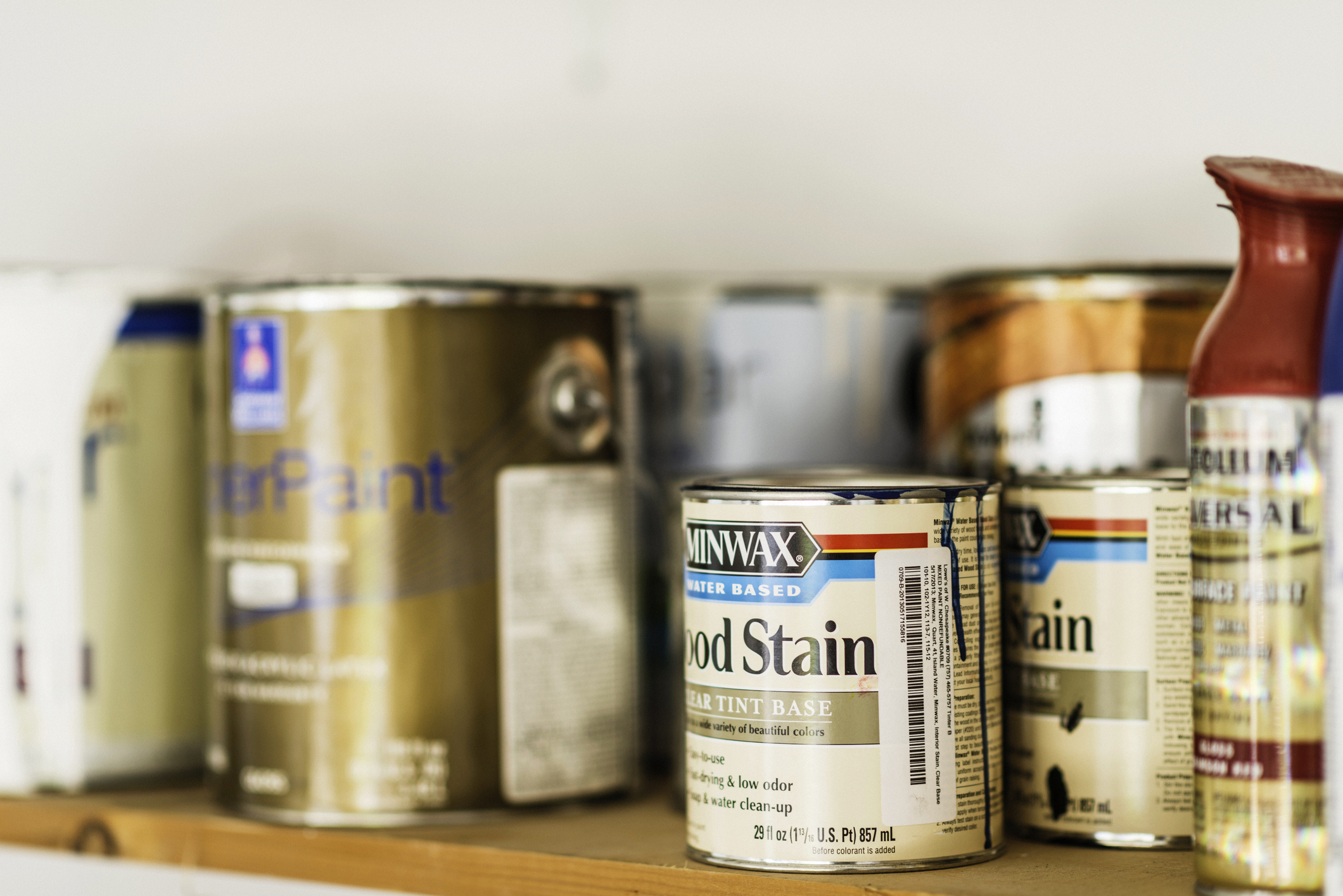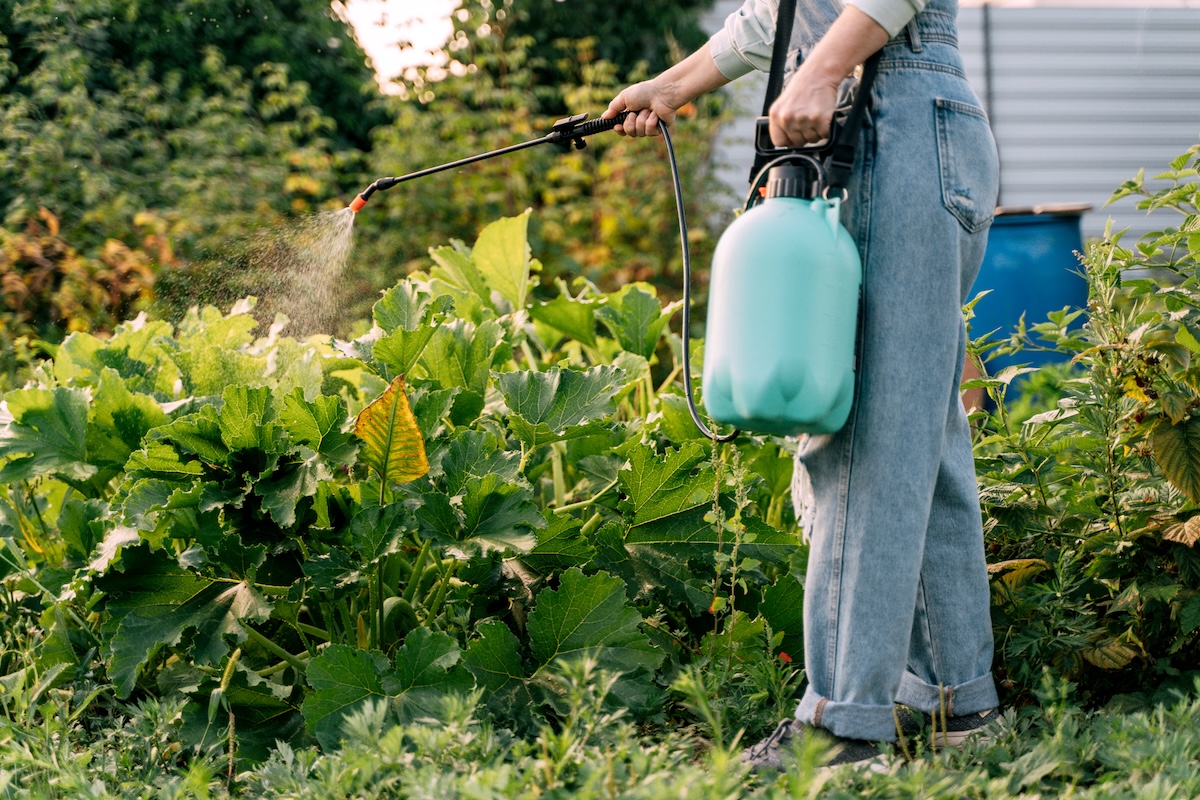

We may earn revenue from the products available on this page and participate in affiliate programs. Learn More ›
Sometimes we purchase items for our home and don’t realize how difficult it will be to remove them someday when we no longer want them around. With some items, like those that are too bulky or contain hazardous chemicals, there are rules and restrictions to keep in mind.
We asked several sustainability and home experts to find out which products they consider the most challenging to dispose of. They shared their solutions and suggestions for more sustainable alternatives. “Sustainable living doesn’t have to be a headache,” says Eric Goranson, host of The Around the House Show. “Sometimes, simple, creative solutions are all it takes to reduce waste and make a positive impact.”
1. Paint

Those old cans of paint cluttering your garage or shed can be a headache when the time comes to dispose of them. “Paint cans should not be discarded in the trash unless the paint is completely dried out,” says Julia L. F. Goldstein, Ph.D., author of Material Value and Rethink the Bins and the founder of JLFG Communications. “Paint stores will often take open containers of water-based latex paints for recycling, either for free or for a small fee. They will then filter the paint and remix it to make dark colors.”
There are a few additional ways to get rid of old cans of paint. Check if your local recycling or hazardous waste disposal facility accepts old paint via drop-off or curbside collection. Goldstein recommends checking with PaintCare, which runs a paint recycling program in select states. If recycling options aren’t available, you might donate the paint to a local school or community theater company to create sets or art projects, she suggests. “However, oil-based paints are more challenging, as these are considered hazardous waste,” she warns. “Check with your garbage hauling company for hazardous waste disposal locations,” says Goldstein.
2. Carpet

Choosing carpet over other flooring options comes with a list of pros and cons, ranging from comfort to allergies. One of the concerns is knowing what to do with old, beat-up carpeting that you tear out. “Used carpeting often contains a mix of materials that complicate recycling,” says Josh Qian, home improvement expert and COO and co-founder of Best Online Cabinets. Plus, the bulkiness makes carpet a challenging household waste to transport.
Qian suggests checking for local carpet recycling programs that can repurpose old carpets into new products. Also, some retailers offer take-back programs when you purchase new flooring. Make your next floor choice a more sustainable one. “Instead, consider eco-friendly flooring options, such as bamboo or cork, which are more sustainable and often easier to install and maintain.”
3. Plastic Bags

Every time you go shopping, you have a critical choice to make regarding how your purchases get home. If you bring them home in single-use plastic bags, the bags will accumulate in your home and contribute to the plastic pollution crisis. Made from petroleum, plastic bags end up as deadly waste in landfills and the ocean, and even break down into microplastics that we end up consuming. Yet Americans still use an average of 365 plastic bags per person per year, according to the Center for Biological Diversity.
“Plastic bags settle in the environment because they cannot be broken down, and don’t get picked up for recycling from curbside because they get stuck in the equipment,” says Guillaume Drew, founder of sustainable living brand Or & Zon. Instead of using plastic bags, Drew recommends finding “alternative cloth or mesh bags to completely eliminate the problem and return them back to retail stores” if they offer plastic bag collection bins.
4. Pesticides and Herbicides

Use of pesticides and herbicides can be harmful to your lawn and garden and plants, but especially to animals, pollinators, and people that come in contact with these chemicals. In addition, they are more trouble than they are worth when it comes to disposal. “Toxic compounds need to be disposed of properly to protect the environment from potential harm,” warns Drew. He recommends dropping these products off at household hazardous waste collection centers or events and in the future using organic versions on the market instead, such as compost tea or neem oil.
Goranson suggests offering leftover pesticides to neighbors through social platforms like Facebook or Nextdoor. “Someone nearby might be able to use them, saving you the hassle (and cost) of hazardous waste disposal,” he says. “Plus, you’ll keep all those chemicals out of the landfill.”
Keep in mind pesticides are a type of hazardous waste; never throw them away in the regular garbage. Call 1-800-CLEANUP (1-800-253-2687), go to earth911.com, or contact your State Health and Environmental Agency for product-specific disposal instructions.
5. Exercise Equipment

Working out at home saves time and eliminates excuses about not wanting to trek to a fitness center. About 40 percent of Americans own or have access to home exercise equipment. However, when the time comes to get rid of the treadmill, elliptical machine, or weight bench—whether you are downsizing or are no longer interested in using the equipment—it can be challenging.
Drew explains that exercise equipment is difficult household waste to deal with because “transportation is a big issue due to its combined weight, large dimensions, and mixed materials such as metal, plastic, and rubber, which complicates the transport.” He suggests offering the equipment to local schools, gyms, or nonprofit organizations for free. “Many regions also possess scrap metal industries to which broken equipment can be donated,” he says.
Consumer Reports recommends contacting the manufacturer to see if they have a take-back recycling program. If not, ask your city or municipality if they accept exercise equipment as part of their e-waste recycling program. As a final resort, you can contact a junk removal company to remove it for a fee.
